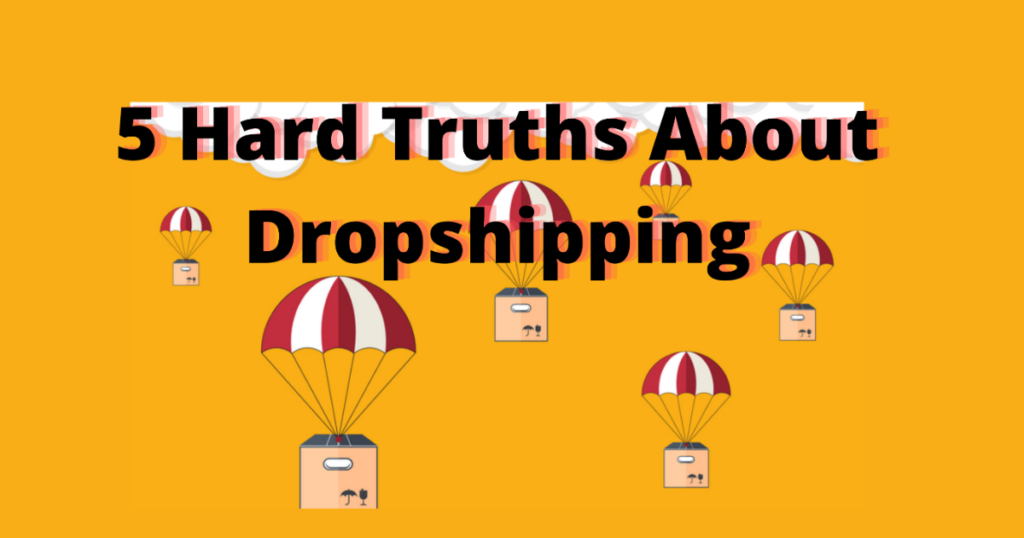Dropshipping is an order
fulfillment strategy that does not call for a company to maintain inventory.
Instead, a third-party supplier receives the sales order from the store and
distributes the product to the buyer.In contrast to common opinion, the
dropshipping business concept is not a way to become wealthy quickly.Selling
other people\’s items and keeping a percentage of the sale may seem like simple
money, but when you take all the disadvantages, challenges, and daily
management into account, it may actually be difficult job.However, if you go
about it the right manner, dropshipping can still assist you in creating a
prosperous company. simply not as soon as you had wanted.Here is everything you
need to know before you begin dropshipping on your e-commerce platform, from
the advantages and disadvantages of doing so to the finest strategies, from the
top dropshipping businesses to frequently asked questions:
The dropshipping model
can be a solution and, more importantly, be advantageous to an ecommerce store
if you\’re a business owner looking to ship products for your online store (for
example, a traditional retail business selling t-shirts) without the hassle of
having to stock the inventory yourself — or potentially add new products.
Following an online
purchase, the dropshipping company sends the ordered item directly to the
consumer. It provides both big and small businesses with a way to source goods,
earn some extra cash, and free up some storage space.Of course, this is easier
said than done, so before you invest all of your cash in a dropshipping
business, consider the following reasons why it can be challenging:
1. Low margins.
The overhead is low
because you don\’t manage or store inventory, but so are the returns.Less money
in, less money out. You must do a lot of business just to stay afloat, let
alone make a profit, since most of the money goes to the supplier.
These low margins barely
cover marketing/advertising, website maintenance, SEO, sales order management,
and office hours.
You can predict your
income using these variables (they\’re averages, so they\’ll change):
5% margin.
2% conversion.You can
estimate using this equation:
Traffic x 0.02/(Average
order value x 0.2) = Profit
This is fine for a quick
starting estimate, but you must also consider:
Your manufacturer and
wholesaler discount may be under 20%.
This doesn\’t include the
extra costs you must pay. Not final profit.Most products require profit cuts to
remain competitive. Other companies can undercut you if you stick to your 20%
margin.Profit is also largely determined by traffic, so if you\’re building an
ecommerce brand from scratch on BigCommerce or Shopify, you\’ll struggle as you
build a client base.Dropshippers deal with wholesale suppliers, order
processing, returns, and customer service.When you have regular traffic,
dropshipping is more feasible.
2.
Highly competitive
There will always be overly optimistic entrepreneurs
who focus solely on the “low markets suffering more than others.Basically, the
bigger a company is overhead” part and ignore the clear evidence above.Because
very little capital is required to start a dropshipping business, that low
barrier to entry means a lot of fierce competition, with the most popular, the
more they can reduce their markups to offer the lowest prices.To make matters
worse, chances are you don’t have an exclusive deal with supplierThat
means any number of competitors could be selling your exact same products. And
if you’re just starting out as a small business, your rivals with years of
experience have the resources you don’t to undercut your prices
3.
No control over the supply chain.
In standard ecommerce, if customers complain about
product quality, fulfillment speed or return policies, you can address the
problems yourself.
In dropshipping, store owners are more or less at
the mercy of the supplier — but you’re the one who still has to talk to your
customers directly.Dropshippers are essentially trapped, doing little more than
hoping the supplier addresses the problems while simultaneously reassuring the
customer about something that’s out of their control.On top of that, there’s also
a delay in communication as the dropshipper goes back-and-forth between the
customer and the supplier. If one answers slowly, all communication grinds to a
halt and the problems take longer to fix.And if they’re vocal about it,
including on social media, those bad reviews early on could end your business
before it even starts.
4.
Legal liability issues.
Although this isn’t a common problem for
dropshippers, it’s worth mentioning. Some suppliers aren’t as legitimate as
they claim, and you don’t always know where the merchandise comes from.
Even more deceptive is when suppliers illegally use
a trademarked logo or another company’s intellectual property, which happens
more than average.
This potential problem can be rectified with a
solid Dropshipping Agreement
Contract, but not every
dropshipping upstart knows that.
It’s something you’ll want to keep in mind when
choosing suppliers.
5.
Difficult to build a brand.
Like ghostwriters or behind-the-scenes songwriters,
dropshippers must understand that the credit for their work goes to someone
else. If whatever product you’re selling is so amazing, your customers are
going to focus mostly on the product’s brand and forget about the shopping
experience entirely. After all, it’s not your logo on the box. Again, that’s
just another reason why dropshipping makes more sense for already-established
brands than new ones.
